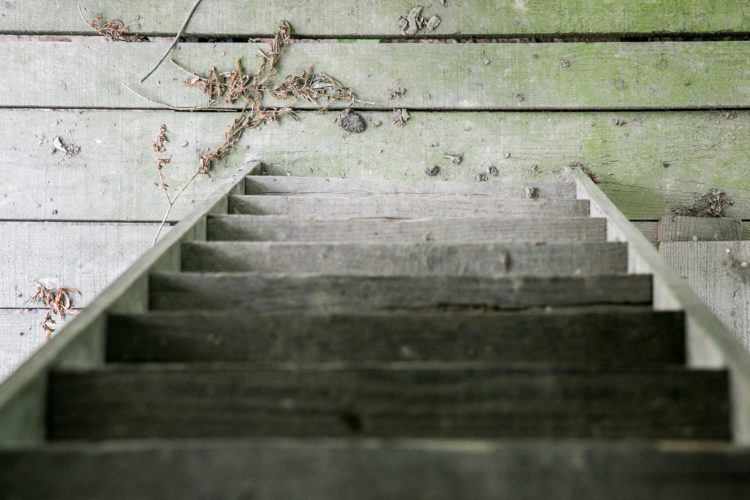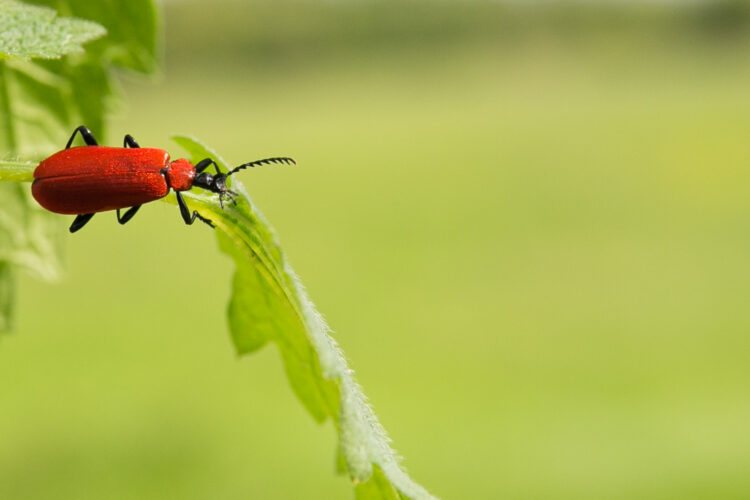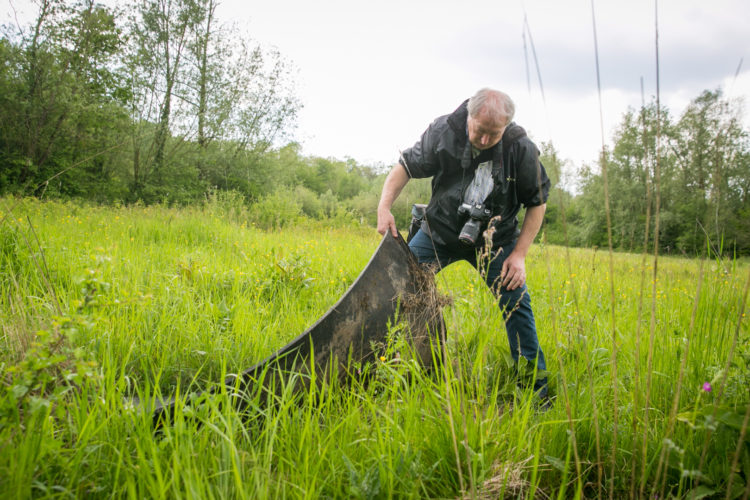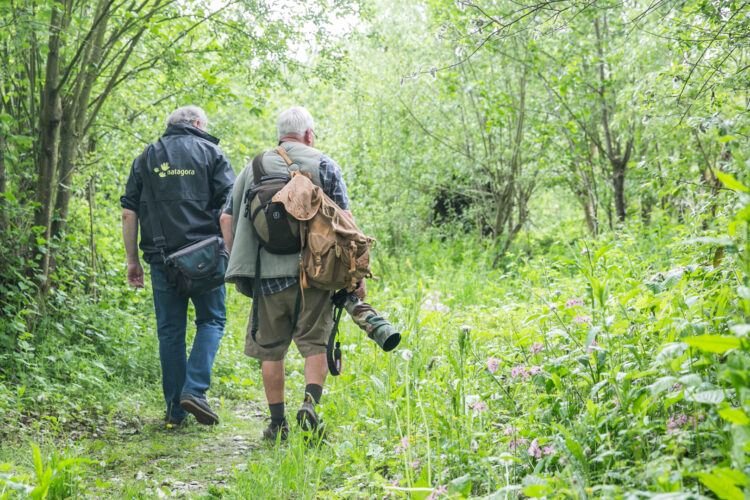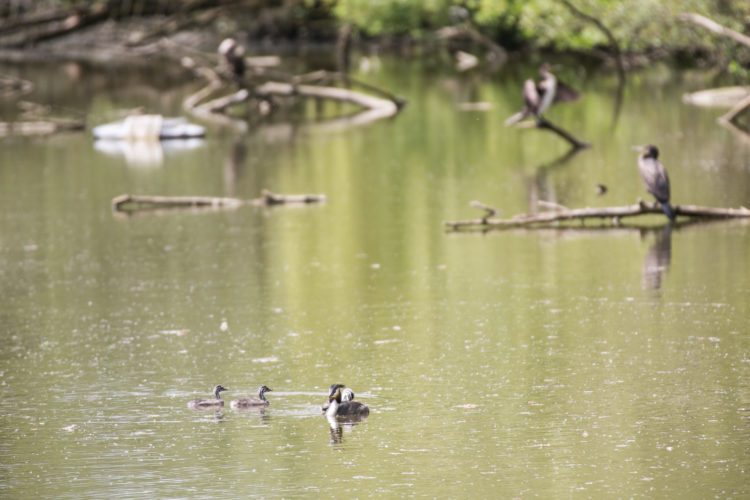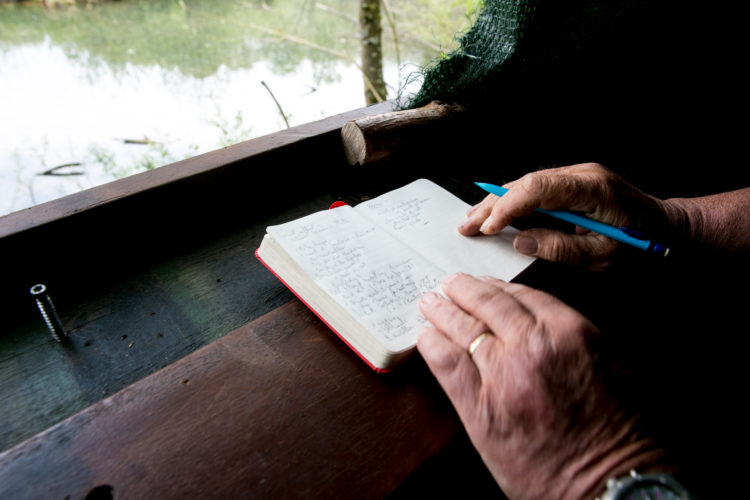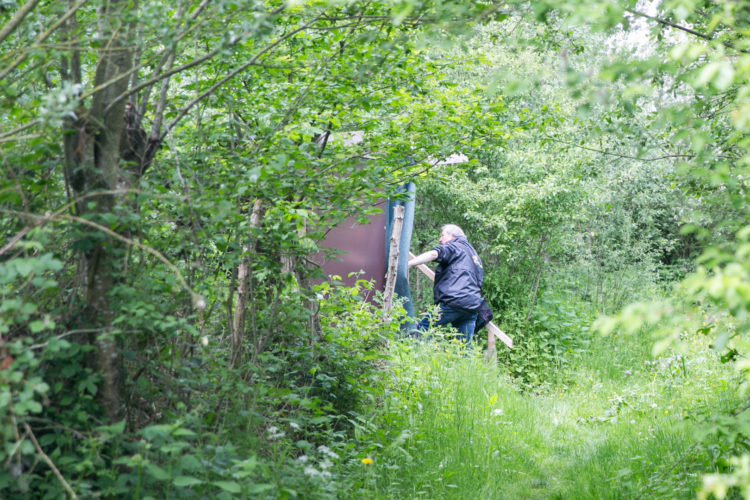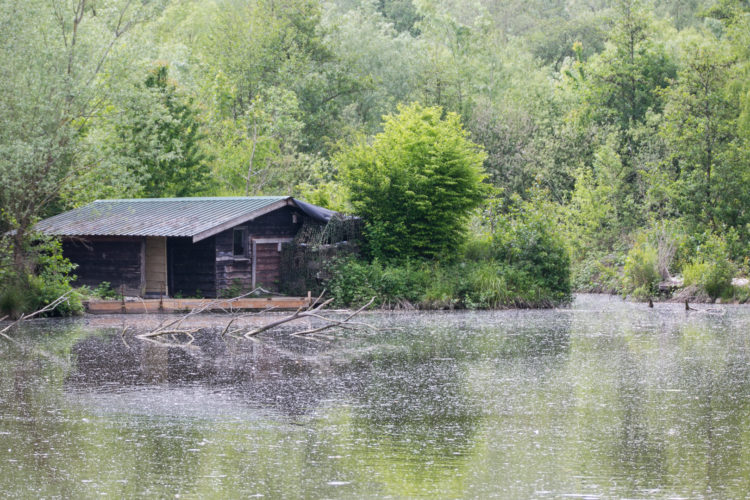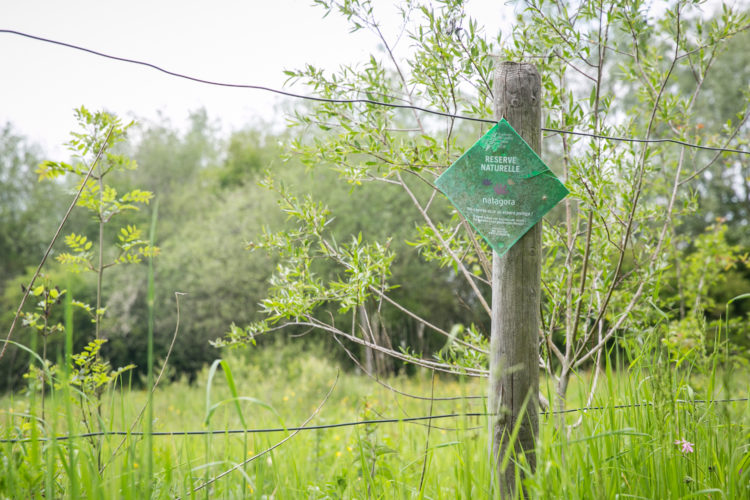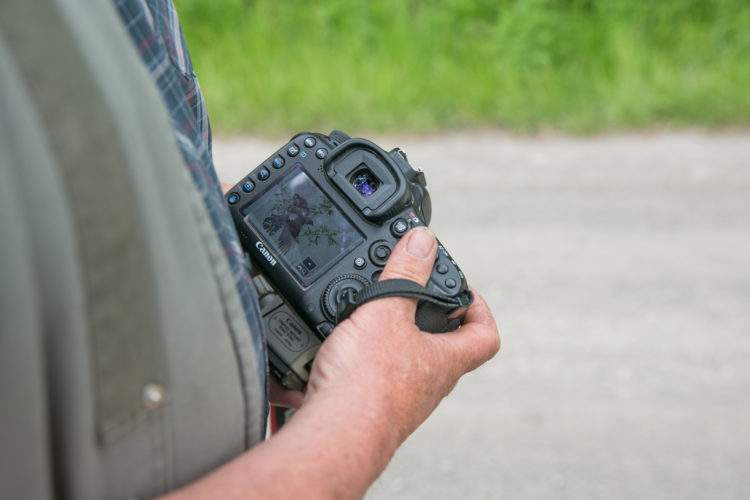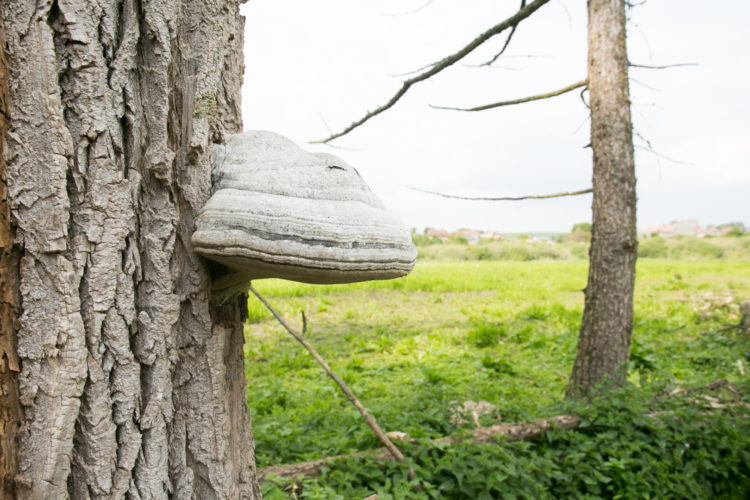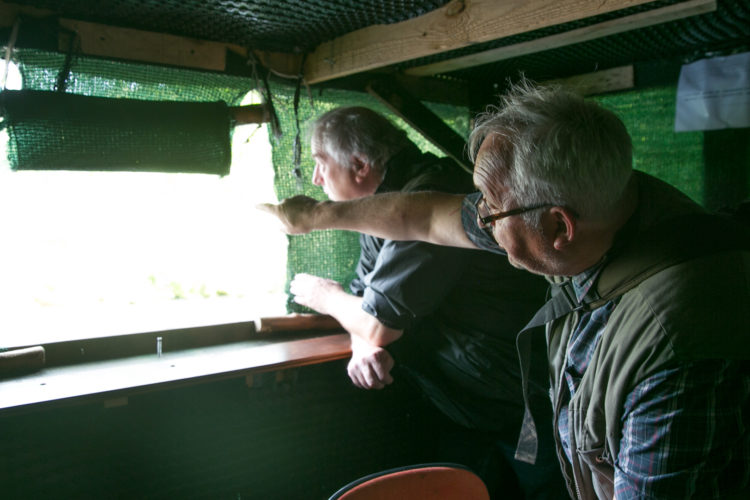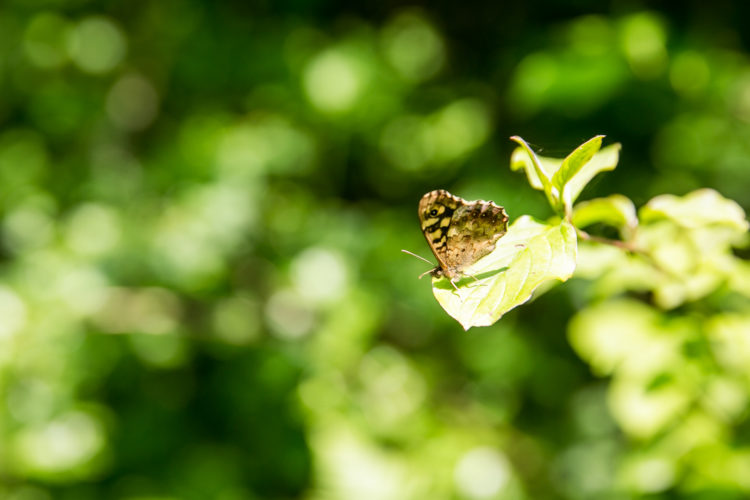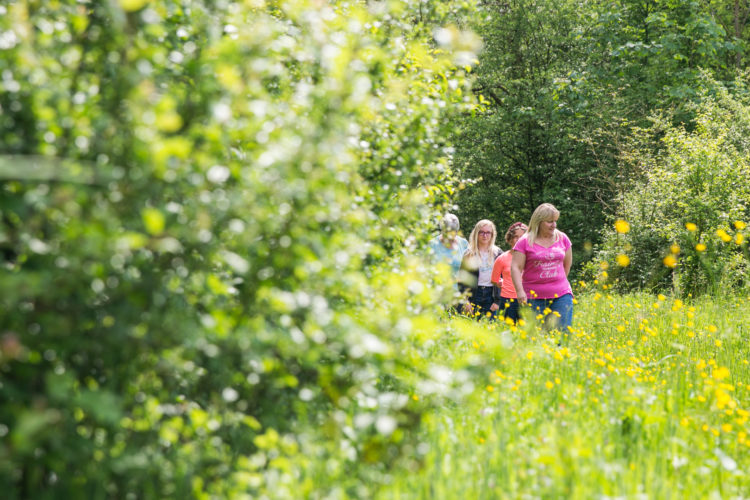Wildlife watching in the Charleroi metropolitan area
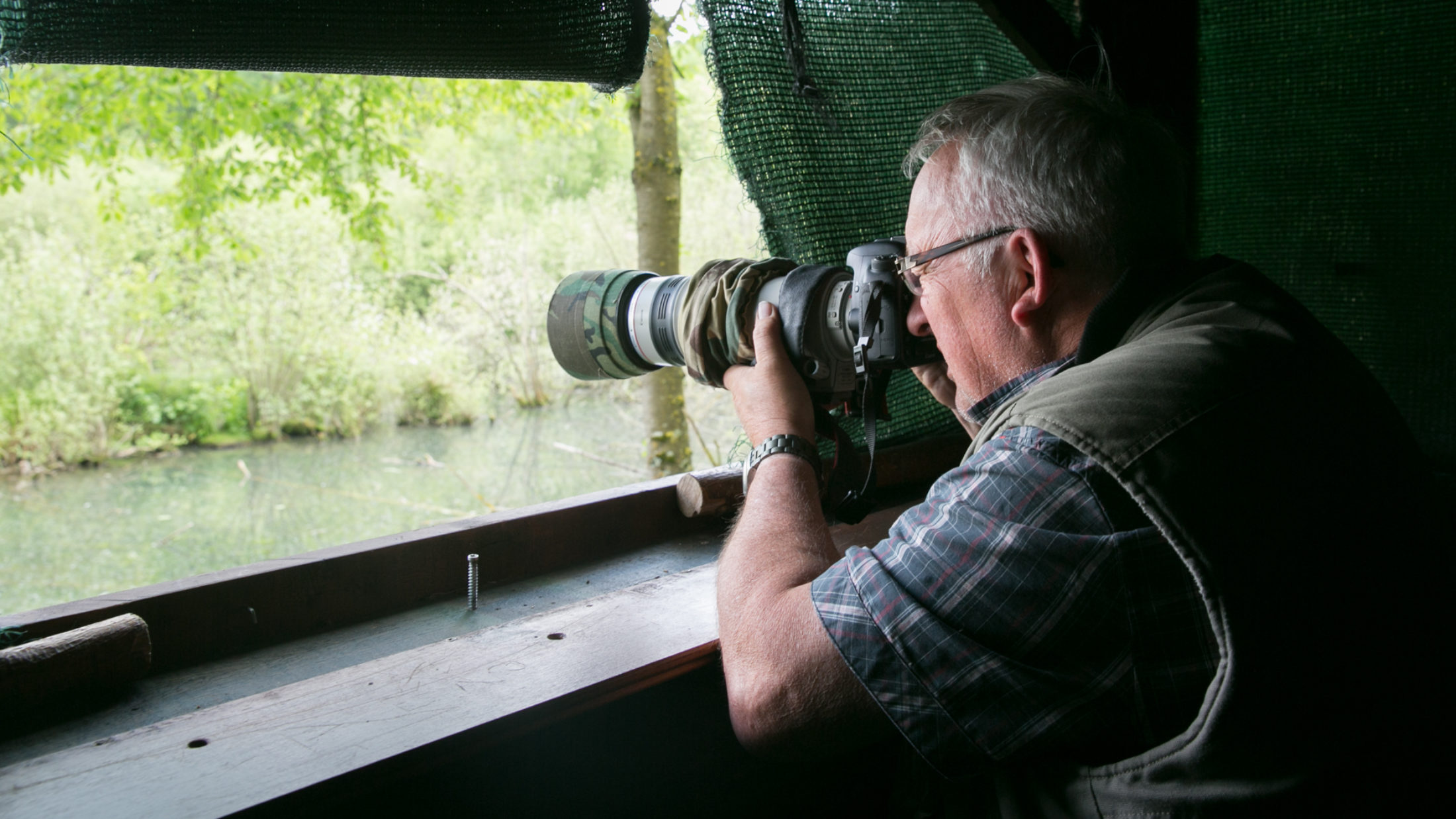
Natagora Nature Reserve: Haute-Sambre – Labuissière – Merbes-le-Château
Recently, I discovered a nature reserve that left me lost for words.
The agreed meeting time was 2pm at the Labuissière lock, in the municipality of Merbes-le-Château. There, I am greeted by a volunteer. He leads me to the Natagora Haute-Sambre Nature Reserve, with him on his motorbike and me following by car. The Natagora logo is emblazoned on his jacket. I park up behind a house and a man, dressed in a khaki gilet, emerges from a lookout.

“I saw a cuckoo. I’ve been waiting for it since 6 o’clock this morning. I heard it, then it flew right over my head, but I didn’t have the time to photograph it. Then by sheer luck it flew over me again and I got it. Look at that,” exclaims Pierre Moiset, also a volunteer, proudly displaying the viewfinder of his camera. Passionate about birds and photography, this wilderness is where he seeks (and finds) true happiness.
This is where I learn that over 75 hectares of land, spanning the municipalities of Labuissière, Merbes-le-Château and Solre-sur-Sambre, there are over 50 resident species of birds. They dwell happily among the woods, wetlands and marshlands. The volunteer stresses: this is the only place to see them.
They have counted over 75 cormorant and heron nests.
“Cormorants and herons build their nests. We have counted over 75. That makes the reserve one of the largest nesting areas in Belgium. There are also 9 species of amphibians, 10 fish species and about twenty species of dragonflies.”
Our volunteer points to the path from which the keen photographer had emerged. This path is the only part of the reserve that is open to the public without a guide. Stretching to about a hundred metres in length, it has lookouts on both sides. We dive straight in.

Don’t move a muscle, don’t breathe a word
“The name nature reserve says it all. Don’t come dressed in bright colours, or you won’t see anything at all. If you really want to be up close with the birds, butterflies, dragonflies, etc., you need to be as discreet as possible”, our guide adds. As luck would have it, I am wearing a dark red jumper.
I stroll among the tall grass and trees. We seek refuge in a lookout. From this small wooden hut, I gaze out at the wetlands through an opening in the camouflage canvas. I discover a shallow body of water with birds, turtles, frogs and dragonflies frolicking about in it. Nobody utters a word. I feel as though I’m in the Netflix series “Our Planet”.
The lookouts are ideal places to stop and rest and take some time to watch.
Emerging from the lookout, my guide explains the conundrum of tourism in the nature reserve. “We want people to know about it and come and see its diversity but at the same time we know that if we want to preserve this diversity, we can’t disturb the animals too much”. I ask him what can be done to allow humans and animals to coexist. “We limit the numbers of visitors and are selective about the groups we allow. Depending on people’s interests, they can get involved personally with the reserve. For example, photographers come and do groundwork in exchange for being granted access. Felling trees, cleaning up areas, putting up enclosures, etc. there is always something to do.”

Those lucky enough to visit the reserve can discover it in three hours, through the eyes of experts in every domain. “Some guides specialise in birds; others in edible wild plants; others still in dragonflies or macro”, he explains. In fact, along the way, he makes regular stops, himself an ardent lover of nature and dragonflies in particular, he shows me a plant with medicinal properties, has me listening out for birdsong, draws my attention to animal tracks… I hang on his every word.
Wild animals and natural maintenance
A little bit further on, I get a whiff of horse manure. I quiz my guide about it. “There are several semi-wild horses that keep the reserve in good working order. They create pathways, they eat some of the plants, they bring a certain balance. Just like beavers, for example”. I don’t get the chance to see these horses; they stay firmly hidden away in their habitat. I did spend a long time though, walking around the reserve with the guide.
This is where my visit comes to an end. Delighted to have discovered this haven of peace that previously I had no idea existed, I feel the urge to stay a while, to discover more of it, but this time just with me, myself and I.

Contact :
Natagora Nature Reserve, Haute-Sambre
Labuissière, Merbes-le-Château and Solre-sur-Sambre,
+32 (0)71 58 89 78: Jean-Marc Laurent (Conservation Manager)
+32 (0)496 66 46 70: Robert Baise (Deputy Conservation Manager)
www.hautesambre.natagora.be
Facebook page: Régionale Natagora Haute-Sambre et Haute-Haine
Tourist information office of Merbes-le-Château
15, rue de la Place
6567 Merbes-le-Château
+32 (0)71 55 90 85
Visitor tips:
Locate the towpath near the Labuissière lock, follow the towpath towards Merbes-le-Château and discover both sides of the nature reserve, up to the Merbes-le-Château bridge (1.5 km)
Food and drink options include Taverne at the lock (Labuissière) and Cliquote (Solre-sur-Sambre)
©Photos/Olivier Bourgi
